Happily Ever After
-View the world through Stories
All of us remember our childhood stories which we have just heard once or twice. Our brain plays an active role while listening and imagining. We travel along with the world of imagination while listening to stories. Though technology is ruling all of us, storytelling always has its own charisma.
“Children have an innate love of stories. Stories create magic and a sense of wonder how we see the world. Stories teach us about life, about ourselves and about others. Storytelling is a unique way for students to develop an understanding, respect and appreciation for other cultures and can promote a positive attitude to people from different lands, races and religions” (“Storytelling-benefits and tips”).
I got the privilege to be a storyteller through which I could introduce children to different genres, reinforce our school cultures & Learner profile, enhance their language, tweak their problem-solving skills and empower them with worldly knowledge. Stories are a pleasure and lifelong partners. It is my pleasure to introduce students to different types of storytelling.

Puppetry: A Bad case of stripes By David Shanon
Using a puppet to tell a story is a wonderful technique that can lead children to discover the joy of literature and learning. Puppets can be used “anyway, anywhere, and anytime” to bring stories to life and to spark young imaginations (“Storytelling with Puppets”).
A Bad case of stripes is a story about how peer pressure literally can affect a person (Shannon).
Character costume: Wore stripes all over face and went around. Students were excited and connected to the story, looked forward to read the story “A bad case of stripes”.
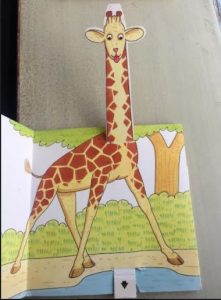
Pop up stories are great fun to build interest in reading and listening skills. While reading a loud story, students were surprised to see the pictures in the book that are popping up. It’s magic for the tiny ones (3years to 5 years old children).
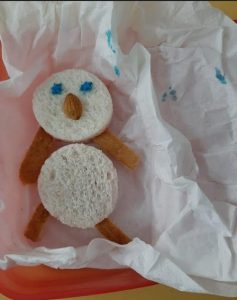
Gingerbread man: I narrated the story and hid the gingerbread man. Students went on in search of a gingerbread man. It’s a great fun activity. Here is the reflection of the story; the next day, kids got a gingerbread man for breakfast.
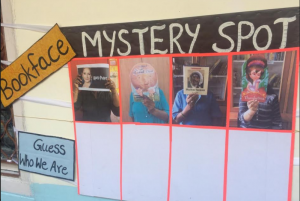
Displayed Book Face in the mystery spot and asked students to guess the person behind the book. Displayed this for one week and revealed the faces in the assembly. Whole week students were curious to know the person behind the book. This activity is to attract students towards the library, and we achieved it.
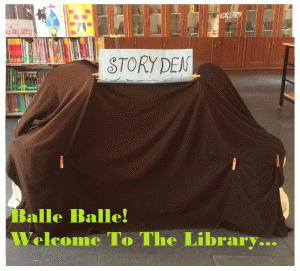
Story Den
Told “Wrestling Mania” story through story den and displayed the book too. Students showed interest to read the book.
Enacted the story “The Giving Tree “and asked students to guess the title of the story. Oh! What fun it is.
Author Week: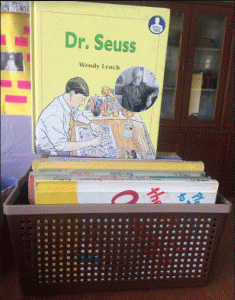
Introduced author and discussed his books. Students enjoyed the repetition of the words and illustrations in the book. After reading, students came forward and shared about “what they liked the most “in the book. Students enjoyed and looked forward to reading Dr Sues’s books after that.
It was beautiful to touch so many young people where everyone is listening to you, believing your story, and looking at you with eyes wide open. I can see all the emotions; they are just with me at the moment. Students look forward enthusiastically to do activities after storytelling sessions like drawing, clay moulding, puzzle-solving, writing a synopsis of the story, reading a story, presenting folktales to the peers in groups, guessing the character name, imitating the character traits (Damsharats).
Students wait for their turn to visit the library and for storytime. I became their story ma’am. Every time they see me in the corridor, they utter catchy words introduced during the storytime or enact a character trait of a fictional character or show simple gestures that I had introduced through my stories.
The library space has turned into a fun place where children try tongue twister while pronouncing the name of the fictional character from the Chinese folktale “Tikki Tikki Tembo No Sarembo Cheri Bhari Ruchi Piperi Pembo”.
Their wide twinklings eyes will make me dive into the ocean of books deeper. I will come back soon with another story.
Work cited list:
Storytelling- benefits and tips. (n.d.). Retrieved from http://www.teachingenglish.org.uk/article/storytelling-benefits-tips.Accessed 2 Sept 2020.
Storytelling with Puppets – University of South Carolina. www.libsci.sc.edu/storytelling/techniques/collinspuppethanout.pdf.
“A Bad Case of Stripes by David Shannon.” Goodreads, Goodreads, 1 May 2004, www.goodreads.com/book/show/474858.A_Bad_Case_of_Stripes.
By
Sunitha Maddipati,
The Passionate Storyteller.

